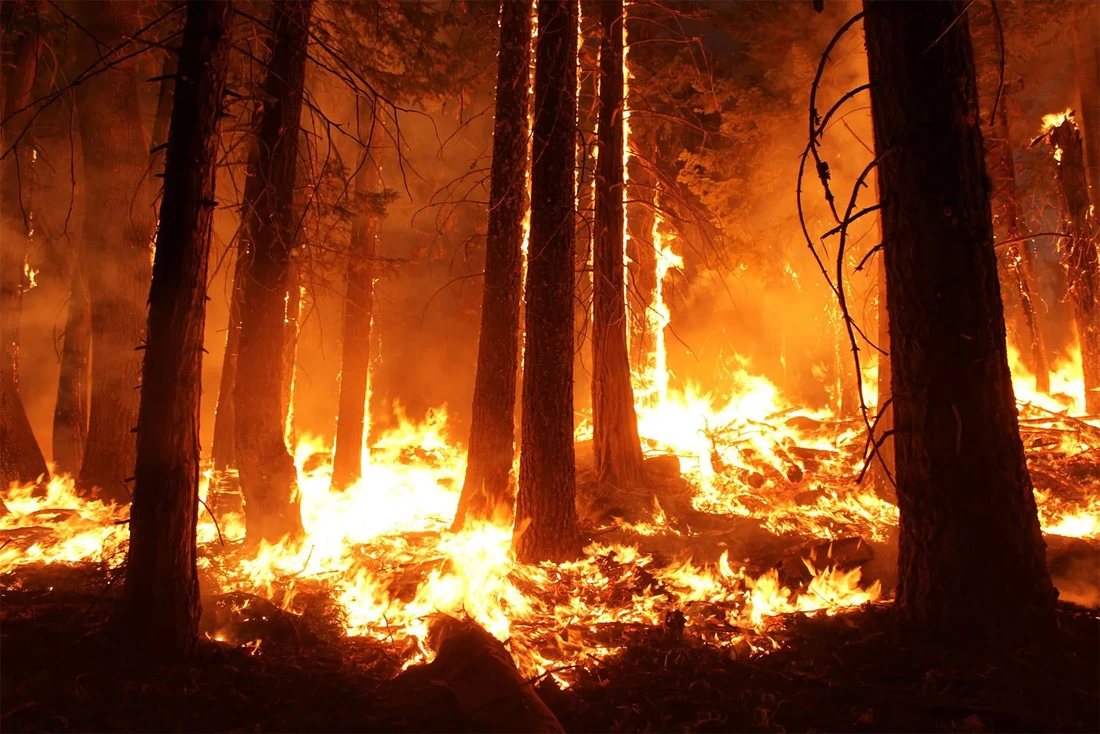"The Fiery Connection: Unraveling the Links Between Climate Change, Wildfires, and Public Health"11/11/2023 In recent years, the world has witnessed an alarming surge in the frequency and intensity of wildfires. This concerning trend is intricately tied to the impacts of climate change, posing not only environmental threats but also significant risks to public health. In this blog, we will explore the complex relationship between climate change, wildfires, and their repercussions on human health. Additionally, we will discuss proactive measures that can be taken to mitigate the increasing wildfire risks.
Rising Temperatures and Drought: One of the primary drivers behind the escalating wildfire crisis is the increase in global temperatures. As climate change leads to warmer and drier conditions, vegetation becomes more prone to ignition, setting the stage for more frequent and intense wildfires. Regions that historically experienced mild fire seasons are now grappling with prolonged and severe infernos. In 2019-2020 Australian bushfires, fueled by record-breaking temperatures and prolonged drought, devastated vast landscapes, resulting in loss of life, property, and biodiversity. Changing Rainfall Patterns: Climate change is altering precipitation patterns, contributing to prolonged periods of drought followed by intense rainfall. This erratic weather behavior exacerbates wildfire risks by creating conducive conditions for vegetation growth and subsequent ignition during dry periods. In 2020 California wildfires, exacerbated by a combination of prolonged drought and sporadic heavy rains, led to massive blazes that ravaged large areas and caused hazardous air quality. Air Quality Concerns: The smoke produced by wildfires contains a cocktail of pollutants, including particulate matter, carbon monoxide, and volatile organic compounds. Prolonged exposure to these pollutants poses severe health risks, especially to individuals with respiratory conditions, children, and the elderly. During the 2018 Camp Fire in California, residents experienced hazardous air quality levels, leading to an increase in respiratory issues and hospitalizations. Vector-Borne Diseases: Wildfires can alter ecosystems, influencing the distribution of disease-carrying vectors like ticks and mosquitoes. Changes in habitat and temperature can facilitate the spread of diseases such as Lyme disease and West Nile virus. The aftermath of the 2016 Fort McMurray wildfire in Canada saw an uptick in Lyme disease cases, attributed to changes in the behavior of tick vectors. Forest Management and Prescribed Burns: Implementing controlled or prescribed burns can help reduce fuel loads in forests, preventing the buildup of combustible materials. Proper forest management strategies, including thinning vegetation and creating firebreaks, can also limit the spread of wildfires. Australia has implemented controlled burning programs to reduce fuel loads, enhancing the resilience of ecosystems and minimizing the risk of catastrophic wildfires. Investing in Technology and Early Warning Systems: Utilizing advanced technologies such as satellite imagery, drones, and artificial intelligence can enhance early detection of wildfires. This enables swift response measures and aids in minimizing the extent of damage. In the United States, the use of the "Fireguard" system combines satellite data and weather forecasts to predict wildfire risks and support firefighting efforts. Community Education and Preparedness: Educating communities about wildfire risks and implementing preparedness measures, including evacuation plans and creating defensible spaces around properties, is crucial. Public awareness campaigns can help foster a proactive approach to wildfire prevention. In Sweden, community-based initiatives and education programs have played a key role in raising awareness and reducing the impact of wildfires. Addressing the interconnected challenges of climate change, wildfires, and public health requires a multi-faceted approach. By implementing proactive measures, investing in technology, and fostering community engagement, we can work towards building resilience against the growing threats posed by wildfires in a changing climate. It is a collective responsibility to protect our planet, mitigate climate change, and safeguard the well-being of present and future generations.
1 Comment
3/5/2024 09:19:42 pm
I wanted to express my gratitude for your insightful and engaging article. Your writing is clear and easy to follow, and I appreciated the way you presented your ideas in a thoughtful and organized manner. Your analysis was both thought-provoking and well-researched, and I enjoyed the real-life examples you used to illustrate your points. Your article has provided me with a fresh perspective on the subject matter and has inspired me to think more deeply about this topic.
Reply
Leave a Reply. |
|

